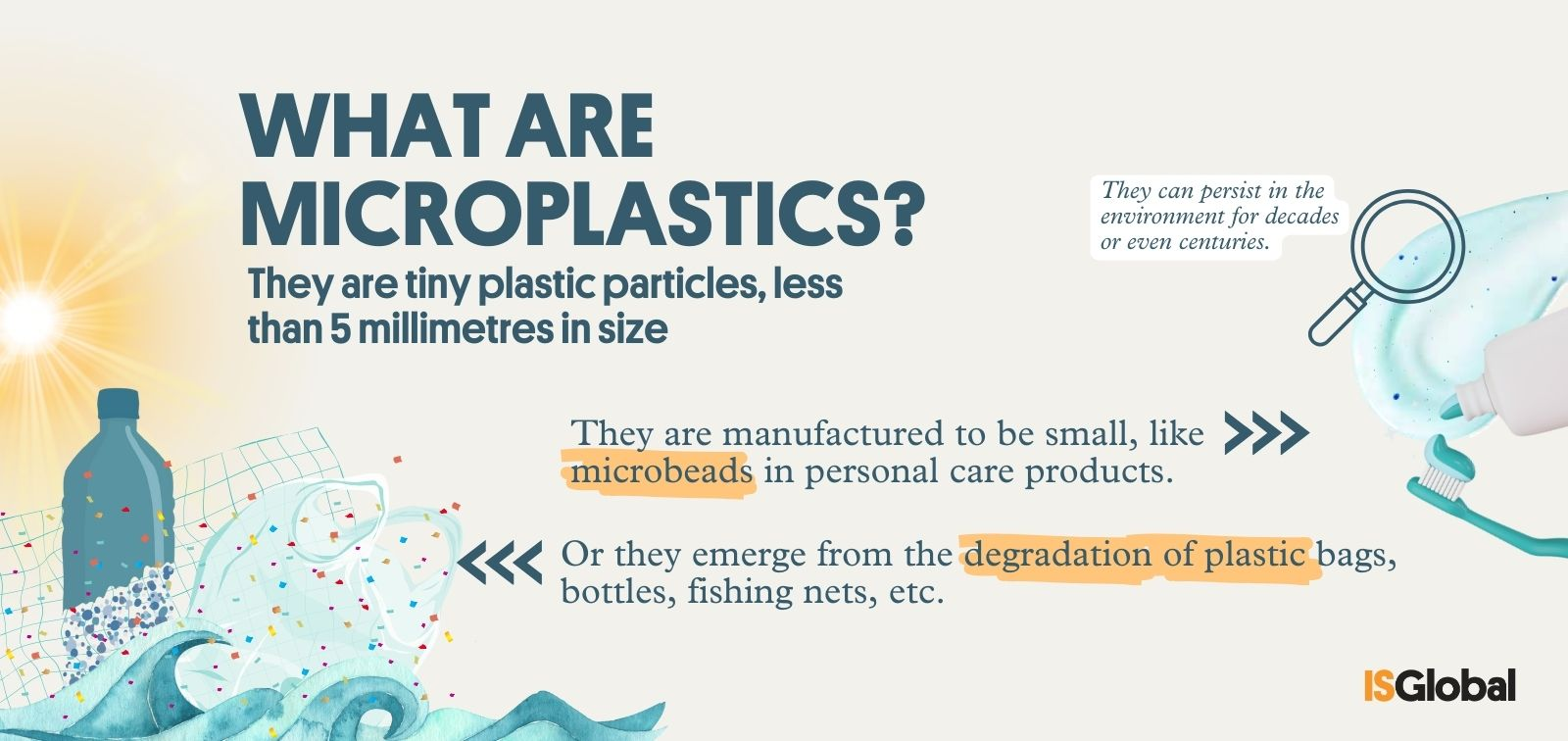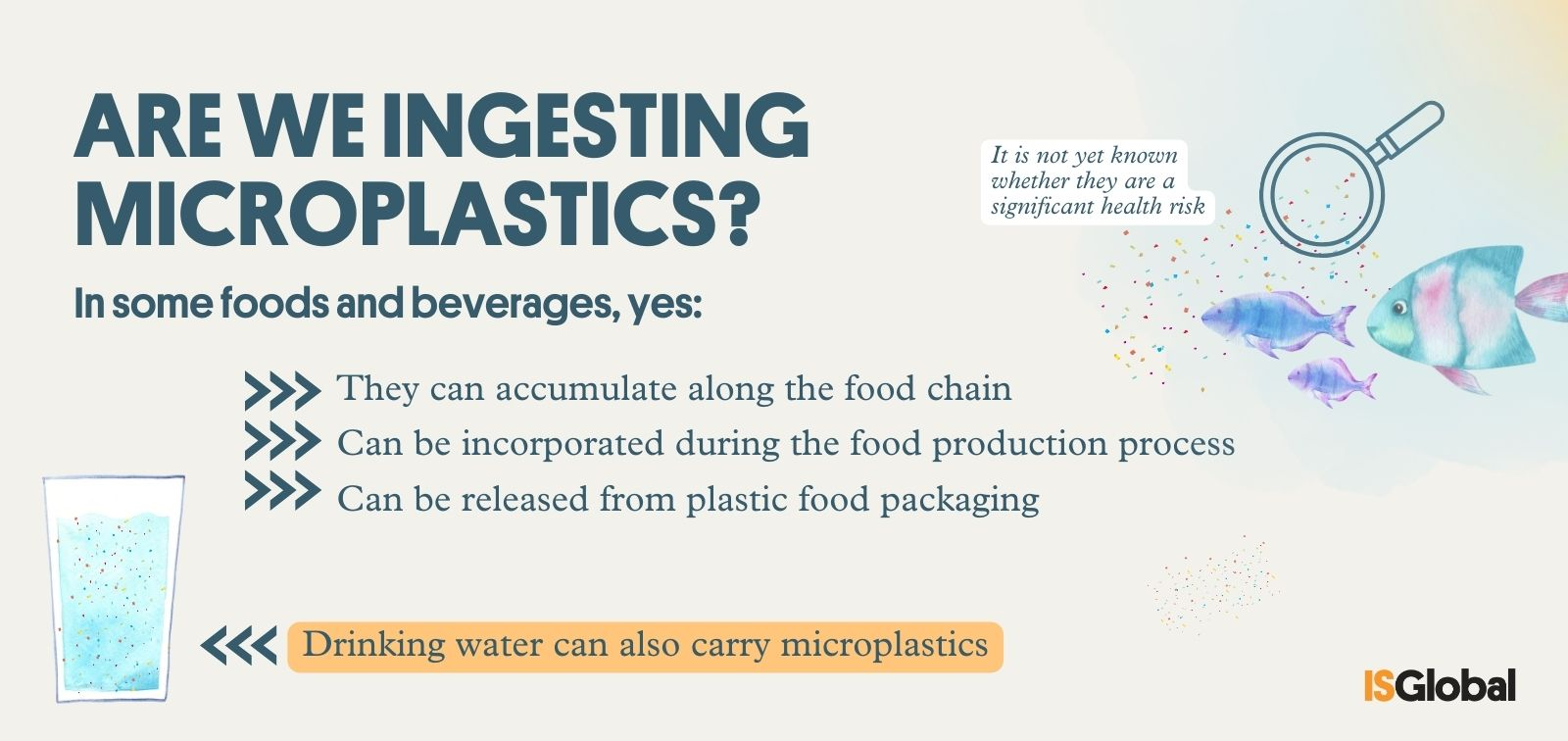Microplastics

What are microplastics?
Microplastics are solid plastic particles that are insoluble in water and measure less than five millimetres (<5 mm). They are a group of synthetic materials made from petroleum-derived or bio-based polymers and can persist in the environment for decades or even centuries. They include nanoplastics, which can measure from 1 to 1,000 nm (1,000,000 nm is 1 mm).
Microplastics are classified into two groups: primary and secondary.
- Primary microplastics are those that are specifically manufactured for use in products, such as microbeads used in the cosmetics sector (toothpaste, exfoliants, etc.) and industrial and agricultural products. Through the air, rainwater runoff or the sewage system, primary microplastics reach rivers, reservoirs and seas directly.
- Secondary microplastics come from the breakdown of larger plastic products that have degraded through exposure to water, wind, ultraviolet light or microorganisms. They end up in the natural environment through poor waste management or littering.

Consequences for human health
The human body is exposed to microplastics and nanoplastics through the ingestion of contaminated food and beverages, the inhalation of microplastics suspended in the air, and through skin contact when microplastics are contained in personal care products. Currently, the main pathway of human exposure to microplastics is considered to be ingestion.
The effects of microplastics on human health are not yet fully understood. In vitro studies have shown inflammatory responses, neurotoxicity and carcinogenicity, while in vivo studies in rodents show accumulation of microplastics in key organs.
In humans, microplastics have been detected in tissues: in the gastrointestinal tract, lungs, blood and reproductive system. In addition, plastic additives are endocrine disruptors associated with diseases such as type II diabetes and respiratory diseases. Although the extent of human exposure and its long-term consequences are unknown, ongoing studies seek to clarify these impacts.

Consequences for the environment
The small size of microplastics and nanoplastics allows them to be highly mobile. This means they can be found anywhere on Earth: mountains, glaciers and even in the deepest parts of the ocean (they have been found at depths of 10,000 metres). They pose a potential threat to aquatic life.
They can be absorbed by most living organisms, so their accumulation in the environment and their potential effects on human health are a major environmental and public health concern.
Being less exposed to sunlight and with lower temperatures and oxygen levels, plastic takes longer to degrade in the oceans, taking up to 500 or 600 years. During this time, all plastic objects can cause serious damage to marine wildlife. According to Greenpeace, some 700 species of marine organisms are affected by this type of pollution. Every year, more than one million birds and more than 100,000 marine mammals die as a result of all the plastic that ends up in the sea.
What can be done?
As consumers, we can look for alternatives to single-use plastics and avoid heating food in plastic containers. We can also check which products contain primary microplastics and avoid buying them.
At the government level, it is necessary to promote the phasing out of microplastics in cosmetics and personal care products. In 2023, the European Union approved a regulation that provided for the entry into force of a series of restrictions on the use of microplastics with different application dates.
Although our personal contributions are significant, businesses and government agencies have a crucial role to play in addressing this problem.
READ MORE
COLLAPSE
MULTIMEDIA MATERIAL
